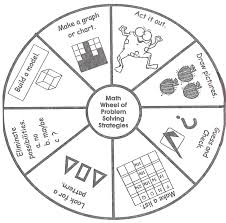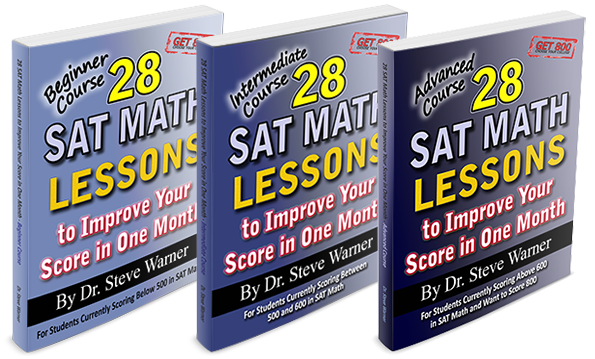 Whenever I give SAT math prep advice, the first thing that I always tell my students is to learn as many SAT specific math strategies as possible. So naturally, some of my students will ask me exactly what an SAT specific math strategy is.
Whenever I give SAT math prep advice, the first thing that I always tell my students is to learn as many SAT specific math strategies as possible. So naturally, some of my students will ask me exactly what an SAT specific math strategy is.
These strategies are methods to getting the answers to SAT math problems in ways that are different from the way you were taught in school. Some of these strategies will save time, some will save you from making careless errors, and some will get you the correct answer even when you do not understand the question.

As a preview, let me give you a very basic sample strategy. This strategy is extremely easy to apply, and it is very useful for solving a wide range of SAT math problems in all topics and difficulty levels.
Start with choice (C)
In many problems you can get the answer simply by trying each of the answer choices until you find the one that works. Unless you have a specific reason not to, you should always start with choice (C) as your first guess.
The reason for this is simple. Answers are generally given in increasing or decreasing order. So very often if choice (C) fails you can eliminate two of the other choices as well.
As a simple example, consider the following problem:
Three consecutive integers are listed in increasing order. If their sum is 531, what is the second integer in the list?
(A) 176
(B) 177
(C) 178
(D) 179
(E) 180
Begin by looking at choice (C). If the second integer is 178, then the first integer is 177 and the third integer is 179. Therefore we get a sum of 177 + 178 + 179 = 534. This is a little too big. So we can eliminate choices (C), (D) and (E).
We next try choice (B). If the second integer is 177, then the first integer is 176 and the third integer is 178. So the sum is 176 + 177 + 178 = 531. Thus, the answer is choice (B).
Just in case you have forgotten, here are the definitions of the words that appeared in that last question.
The integers are the counting numbers together with their negatives.
{…,-4, -3, -2, -1, 0, 1, 2, 3, 4,…}
Consecutive integers are integers that follow each other in order. The difference between consecutive integers is 1. Here are two examples.
1, 2, 3 these are three consecutive integers
-3, -2, -1, 0, 1 these are five consecutive integers
In summary, if you really want to do well in SAT math it is absolutely critical that you learn as many SAT math strategies as possible. I teach students at the beginner level 20 key strategies that I feel are particularly important.
The more of these techniques you have at your disposal the less likely you are to waste time, make careless errors, and get tricked during the test, and the more time you will have to check your answers. Each new strategy you learn will take you one step closer to a perfect 800 in SAT math.
You can find all of the strategies that you need to get you to the next score level in my “28 SAT Math Lessons” series. As a student currently scoring below 500 in SAT math you should be most interested in the Beginner Course. In this book you will learn precisely the techniques, concepts, and types of problems that you need to improve. Click on the picture below for more information about this book series.
Starting With Choice (C)
When Not To Start With Choice (C)
Best of luck,

Dr. Steve
Get 800
p.s.: Here is a special offer on all of my SAT math prep books: SAT Math Prep Books Full Bundle


